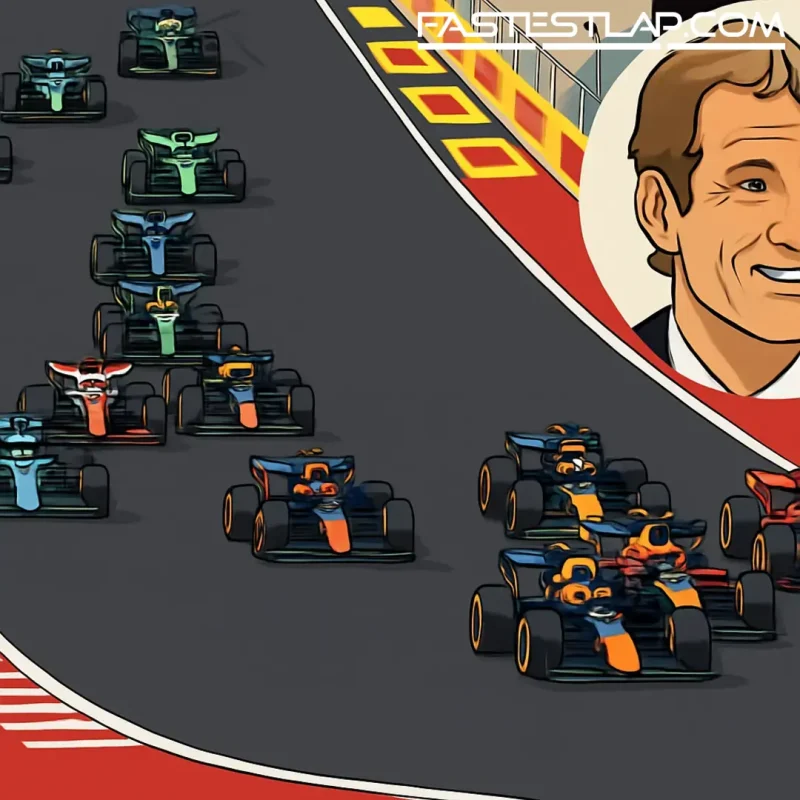Bobby Epstein has never been shy about calling it as he sees it, and on Sprint races, the Circuit of the Americas boss is sticking to his line: they sweeten the weekend, but they don’t shift the box office.
As Austin prepares for another Sprint edition of the United States Grand Prix, Epstein says the format has found its place with fans who are already through the gate — but it’s not the hook that gets them there in the first place.
“I think it just gives more value to the ticket,” he said, noting that while spectators have warmed up to Saturdays that actually count, the presence of a Sprint hasn’t suddenly lit the sales board. “We just haven’t seen it move the needle in terms of sales and demand, but I have no doubt that it’s more entertainment, and we’re all about that.”
That nuance matters at a time when F1 CEO Stefano Domenicali continues to nudge the calendar toward more Sprint weekends. Since their 2021 debut as a three-race trial, Sprints have expanded to six rounds per season, with that number holding for 2026 and chatter ongoing about 2027. COTA jumped in with its first Sprint in 2023 and will host its third next month. Epstein’s verdict remains consistent: as part of a weekend pass, it’s a plus. As a purchase trigger? Not really.
“I’m still not sure that it drives ticket sales,” he added. “If it does bring people out, if they’re buying a weekend pass and they stay more hours at the circuit, that’s better for us… more content.”
Beyond format debates, the bigger picture in Austin is what happens after 2026. COTA’s current contract runs through then, and Epstein sounds bullish on a renewal — without any performative brinkmanship.
“Conversations are ongoing, and I think we’re optimistic,” he said. “I have little doubt that they [F1] want to do anything but continue, and likewise do we. There hasn’t been a sense of urgency on either one of our ends… When it’s time, we’ll come to an agreement.”
If you’re wondering whether the rise of Miami and Las Vegas has crimped COTA’s crowd, Epstein isn’t seeing it. The United States is big enough — and those events distinct enough — to avoid cannibalization. If anything, he says, the calendar spread helps.
“I think we’ve become friendly rivals, and each has its own identity,” he said, adding that Mexico’s return hit Austin harder in the early years than Miami or Vegas ever have. “Miami being in the spring is a chance for the sport to come back to the US… It’s sort of like we’re commercials for each other.”
What does F1 want from COTA to stay on the A-list? Not a wholesale rethink, according to Epstein, but an upgrade to the high-roller side of the house. Hospitality demand is sky-high, and he’s eyeing a Paddock Club project designed to make a statement.
“Our Clubs are all sold out this year,” he said. “I think what they would like to see is a bigger Paddock Club, and we’re looking at creating something incredibly special that I hope we unveil along with a contract extension. So it’d be a Paddock Club unlike any that anyone has currently.”
That fits a broader strategy in Austin: build the campus into a year-round destination so it isn’t hostage to the racing calendar. The on-site hotel is moving through approvals and, as a tenant, could funnel hundreds of thousands more visitors onto the property each year. That footfall supports the rest of the ecosystem — including COTALAND, the much-teased amusement park set between Turns 19 and 20 with a decked-out restaurant overlooking the racetrack and the headline “Circuit Breaker” rollercoaster edging toward certification.
The showstopper, though, may be a different kind of thrill ride.
“The amusement park is going to have what we’re calling the world’s greatest ride… the ability to take a hot lap on the track,” Epstein said, pitching the sort of bucket-list experience that blurs the line between theme park and petrolhead fantasy. “What could be greater than getting a ride on a three and a half mile Grand Prix track?”
All of it — the hotel, the rides, the track tours — serves a simple purpose: get people on site, let the venue do the selling, and convert the curious into fans. Epstein’s realistic about who those visitors are on a random weekend. They’re not flying in because Max Verstappen’s brake magic. They’re there because Austin is a destination, and COTA wants to be part of that.
“This extra stuff probably still works, because a lot of the extra stuff is to appeal to the non-F1 fan,” he said. “We can use that as a platform to get more fans for the sport… I think it works with or without the Grand Prix, but even better [with it].”
Strip away the marketing gloss, and the message is steady. Sprints add substance to Saturday, not scarcity to Sunday. The US triple-header of venues can coexist, each with its own vibe. And COTA, which helped relaunch F1 in America back in 2012 and now sits alongside Miami’s glitz and Vegas’ neon, is preparing for its next chapter with a bigger hospitality footprint and a campus built to hum year-round.
For a promoter who’s watched the sport’s American boom from the ground up, Epstein’s not chasing novelty for novelty’s sake. He’s betting on consistency, experiences you can feel, and a calendar slot that still feels like Texas — even as the circus keeps adding acts.




